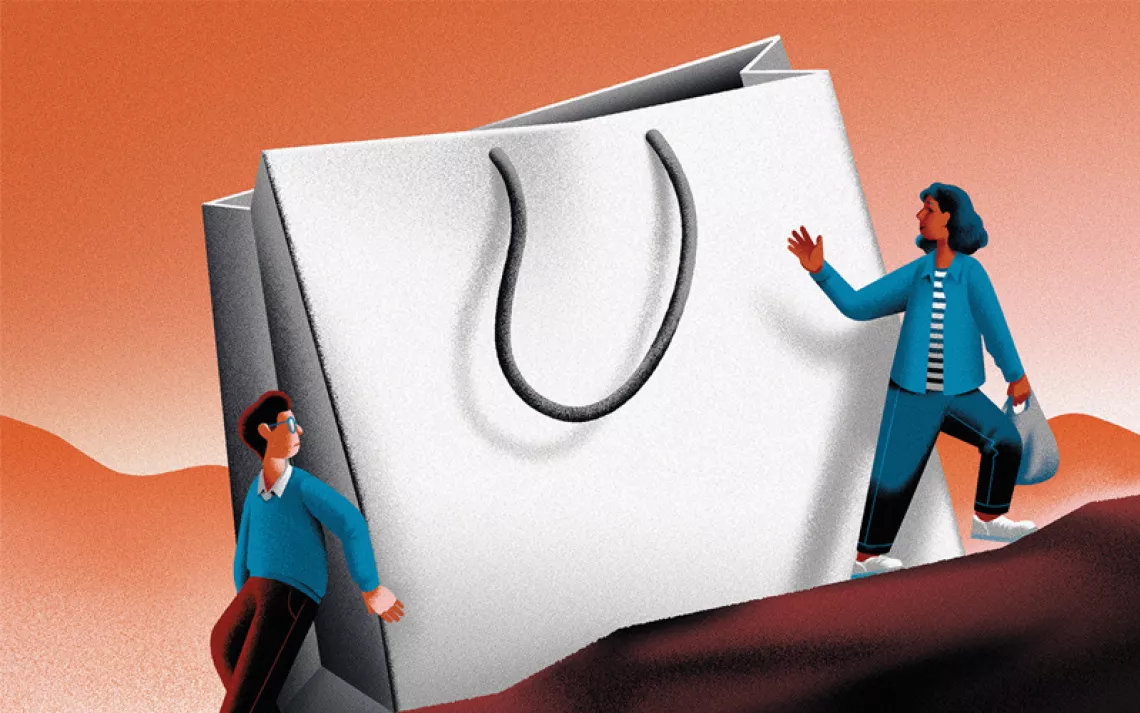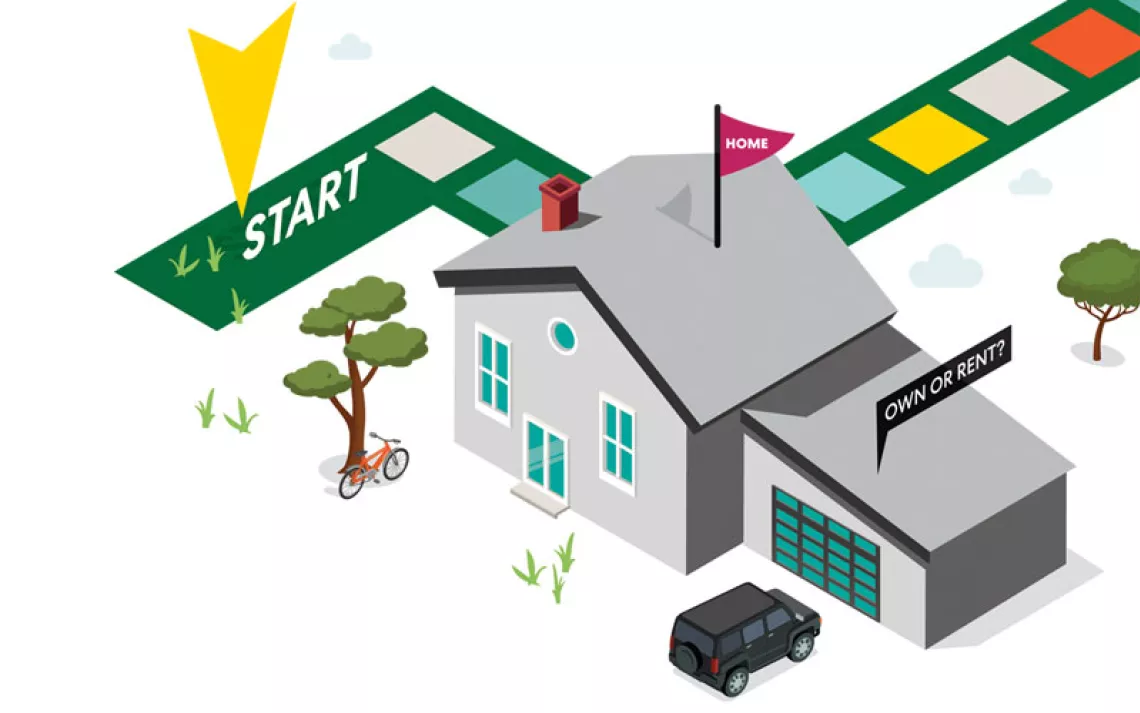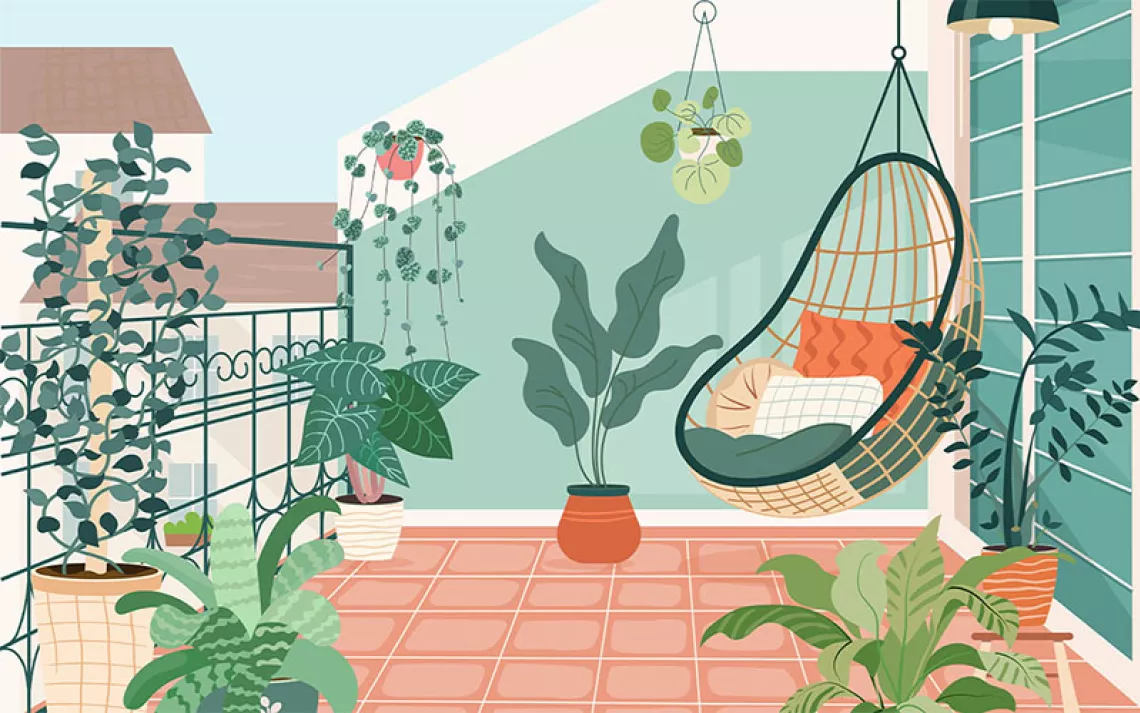How People With Disabilities Weather Natural Disasters
Ensure maximal safety during pandemic disaster season
Casey Green, a high school history teacher in Natchitoches, Louisiana, saw her power flicker out Thursday, August 27, the morning Hurricane Laura hit as a Category 2 storm. “We got a direct hit,” says Green, who went outside to watch the eye of the storm pass over the house just outside town where she lives with her husband, and to look out for fallen trees blocking the driveway. “The first thing you have to consider is if you can leave,” Green says. So far, everything was clear, but that didn’t mean she’d be OK to wait things out without electricity.
Green has cerebral palsy, a non-progressive motor disorder, and with her condition comes additional considerations when deciding if and when to evacuate from the hurricanes the Bayou State is increasingly known for. “The biggest thing for me is driving,” she says. “I can drive and I have a car, but I tend not to drive very far.”
Green says she didn’t prepare a “go bag,” an emergency kit filled with necessities in case of evacuation, for Hurricane Laura. But she and her husband made sure to stock up on nonperishable food, water, and gas for their cars before the storm hit. Green laid out her medications in advance so she’d be ready to make a quick exit.
Another extra consideration for Green: the heat. Green says CP makes her especially susceptible to extreme temperatures. Green and her husband decided to shelter in place Thursday night, their first without power. The next morning, the storm had largely passed, inflicting mercifully little damage on Green’s home, but the temperature was rising and the power in her home still wasn’t back on. She knew she had to go.
The couple loaded their golden retriever and rabbit into the car and made the 250-mile drive to Green’s parents’ house in Folsom, Louisiana. It was a good thing—Green’s power didn’t come back on for a week.
“I forgot my yoga mat,” Green says with a laugh, “and I was really irritated because I use it for stretching.”
Green says she’s one of the lucky ones because she has family nearby. Many don’t. Millions of Americans with disabilities have had to prepare for, and in many cases, flee from natural disasters during the coronavirus pandemic. The ongoing public health crisis is making wildfires in California, windstorms and earthquakes in Utah, and hurricanes along the Gulf Coast even more perilous. Meanwhile, the climate catastrophe is contributing to more frequent and more relentless natural disasters.
Factor in an unfolding eviction crisis that could leave millions of disabled Americans homeless and unable to safely social distance in an evacuation, an aging national infrastructure that remains inaccessible to many, a lack of communication and financial assistance from local, state, and federal agencies—and it becomes clear why inclusivity experts, disability advocates, and everyday Americans who identify as disabled are sounding the alarm.
“We continue to see systemic failures at all levels of the government,” says Shaylin Sluzalis, co-executive director of the Partnership for Inclusive Disaster Strategies, a Philadelphia-based advocacy organization. Sluzalis notes that people with disabilities are two to four times more likely to be injured or killed in a natural disaster and says the partnership’s disaster hotline has seen an 11 percent increase in calls starting in March. They are receiving about 50 calls a week.
“The problem is, seven months into the pandemic in this county, a concise, consistent, systemic approach is not happening. We are going backwards,” says Germán Parodi, who runs PIDS with Sluzalis. “The inclusion of people with disabilities in disaster preparedness has been zero. We have resources and networks, but the powers that be aren’t interested.”
The partnership started holding daily hour-long phone calls with dozens of disability and inclusion organizations across the country on February 28, two weeks before the Trump administration declared a state of emergency to address the pandemic.
One of the partnership’s goals has been to push for the Disaster Relief Medicaid Act, a piece of legislation first introduced in 2019 by Senator Bob Casey, a Pennsylvania Democrat, which would allow people to keep Medicaid coverage across state lines, and would extend coverage to those who have to flee to neighboring states in a disaster. “This stuff is life and death,” says Parodi, who worked with a Lake Charles evacuee who went to Florida after Laura made landfall, only to discover he couldn’t get insulin for his diabetes.
In a report released in August, the organization identified a range of failures in the federal government’s response to COVID-19. They include a lack of personal protective equipment set aside for people with disabilities, inaccessible test sites, and no provision of aides (commonly referred to as direct support professionals). The report states that even as COVID-19 outbreaks in congregate facilities soared, hospitals were more likely to discharge people with disabilities into nursing facilities than into their own homes or community settings with adequate services and support.
Parodi, who is quadriplegic, met Sluzalis in 2017, when both were active in the fight to save the Affordable Care Act from Republican-led efforts to repeal it. They were later deployed as first responders to Parodi’s native Puerto Rico in the aftermath of Hurricane Maria. “We can be part of the planning for disaster,” Parodi says. “We can be part of the response. We can help improve the recovery.”
*
Laura Reeve and her college-age child, Wren, had to evacuate from their home in Santa Cruz County in mid-August due to the CZU August Lightning Complex wildfire. “Our home wasn’t in immediate danger,” says Laura Reeve, a middle-school teacher, “but the smoke got incredibly thick in the county. It was coming through the door.” To which Wren adds, “When you’re wearing an N95 mask in your house, it’s probably time to go.”
Laura and Wren have multiple chronic illnesses, immune disorders, and special dietary needs. Wren, who uses they/them pronouns, is an ambulatory wheelchair user, but decided to evacuate with their cane, leaving behind the chair when they and their mom retreated to Laura’s parents’ house—which is equipped with a HEPA air filter and is mostly one level—up north in Yolo County.
Like Green, the Reeves are quick to acknowledge how lucky they are to have a safe place to wait out the fires. “We had to choose,” Laura says. “We brought ourselves and the pets. If Wren had to bring the wheelchair, we would have had to make some different choices. We would have had to bring two cars, and my husband [who stayed back to work] would have had to evacuate with us.”
Following last year’s fires and rolling blackouts in California, Laura says her family took disaster preparation to the next level. In addition to traditional go bags, they packed what Laura describes as a “large wagon, a tub on wheels.” Laura explains that her family has to take into account things like food allergies, hypoallergenic first-aid supplies, and medications that require refrigeration. For Wren’s asthma, Laura found a solar-powered nebulizer with a rechargeable battery. “There are certainly some special needs in terms of packing,” she says.
The coronavirus pandemic, of course, creates yet another wrinkle in preparation, requiring immunocompromised people to be extra vigilant about wiping down surfaces and hand-washing. Wren says that for them, the silver lining comes in the form of more accommodations for the immunocompromised across the board, such as telehealth appointments and distance learning. It’s a new ballgame now that everyone needs these things, they say. “It’s like, why didn’t you let us have these accommodations before?”
*
Valerie Novack, a disability policy analyst who has worked with the Center for American Progress as well as PIDS, says that in the United States, the pandemic has exacerbated long-existing inequalities in our health-care system and economy. “We’re really seeing our lack of investment in marginalized populations,” she says, pointing out that people with disabilities are often excluded from safety drills at school and work, and that stockpiling the basics for a family of four requires a degree of financial freedom that many simply don’t have—a sentiment Parodi echoes. “It’s not in our population’s budget,” he says.
Even those who can afford to stock up on supplies may find themselves rationing their medications in the event a disaster strikes—this at a time when the long-term effects of COVID-19 may fundamentally transform what it means to be disabled in America. “A lot of people are waking up unexpectedly to the experience of disabled people in the US,” Novack says. “Maybe the pandemic will change the way we look at disability.”
For now, Novack, Parodi, and other disability advocates say that people with disabilities have to rely on their own know-how as well as that of friends and neighbors to come up with a safe evacuation plan. “A lot of this comes down to mutual aid and who you have in your circle,” Novack says. “Who is in your neighborhood that you know? Make sure you’re building up those communities.”
Parodi puts it more bluntly. “There is a responsibility that the government holds, to keep people safe. However, since [Hurricane] Katrina, and again and again, we’ve seen that the law, policy, and execution have numerous gaps. There should be an understanding that we should not fully rely on the idiot response of the government.”
Disability advocates are quick to point out the limitations of traditional emergency preparation, citing the fact that people with disabilities are mentioned only in passing in many local, state, and federal emergency plans. In spite of the challenges of disaster preparation for people with disabilities, Parodi and other experts in the field stress that people living with disabilities have an active role to play in keeping themselves and their loved ones safe.
“Even when you don’t have the financial resources to buy nonperishable food, you can prepare,” notes Novack. Emergency shelters in most cities are not listed publicly ahead of time, making planning difficult, but if you know generally where your shelter may be, like a sports area, locate those places in advance. Novack also encourages people with disabilities to reach out to local emergency workers to let them know about your needs and capabilities. Ask about ramp locations, and tell them what kind of assistance you may need to evacuate.
“We are survivors,” Parodi reminds. “We live in a world not created for us. We know the layers of advocacy. At least have a plan. Have something. Even if it’s just to bring your glasses. We all should spend a day thinking about what we’d do in case of a disaster.”
For now, planning for a disaster, and making sure people with disabilities have their voices heard, is what Eliza Riley of Santa Clara, California, says she spends much of her time doing. Riley has worked with a local advocacy group, the California Association of Life, Safety and Fire Equipment, to address the needs of people with disabilities.
That work is hitting close to home in one of the most destructive fire seasons in the history of the state. Riley and her emotional support animal, a miniature pinscher named Nickel, have been able to remain safe from the California wildfires so far, but Riley worries about the health effects of all the smoke those fires are pouring into the air. “Nickel is so little that if he stays inside, then I know it’s not safe to go out,” she says.
Riley was diagnosed with a rare disease, hereditary spastic paraplegia 4, five years ago. “So neither I nor my doctors know how I’ll react to anything,” she says. “It’s a really scary place to be in, but that’s why I love my dog. . . . As long as he’s in my lap, everything will be OK.”
For now, Riley and Nickel are keeping the air conditioner on 24/7, and Riley is trying to stay stocked up on medication and supplies. “Right now, I’m good, but you never know when they won’t be able to get ahold of some medical supplies,” Riley says. And if a vaccine for COVID-19 became available during a Trump presidency, Riley worries, “I would be the last to receive it.”
*
For one example of what is working when it comes to inclusive disaster risk reduction, we have to go halfway across the world, to Australia, where Dr. Michelle Villeneuve of the Centre for Disability Research at the University of Sydney is bringing together local emergency and community service providers with the people they serve to develop what she calls person-centered emergency preparedness. Villeneuve says that the pandemic, on the heels of an unusually intense bushfire season in Australia, put the need for her team’s work in stark relief. Villeneuve’s organization, Collaborating 4 Inclusion, offers short video tutorials (helpfully narrated for the visually impaired) and tips for caregivers, health-care workers, and people with disabilities. The site also includes real-life success stories, and a step-by-step workbook to help folks prepare for emergencies.
During one pre-coronavirus project, Villeneuve and her team had people with intellectual or physical disabilities interview emergency responders, and vice versa. “You might have someone on a ventilator in a wheelchair in the room interviewing a police officer about his own preparedness or her own preparedness,” Villeneuve says. “You might have someone who’s deaf being interviewed by someone who has an intellectual disability. It was just quite a lovely matrix.”
Now Villeneuve and her team are rolling out a national survey for disabled people and those who care for them to measure preparedness. It will be Australia’s first baseline survey of the support needs of people with disabilities in emergencies.
“Our main driving question is, What can people with disabilities do for themselves and what do they need support for?” Villeneuve says. By having a firm grasp of the specific needs of people with disabilities in a community, emergency services can create better evacuation plans—not just whether someone uses a wheelchair, say, but if they have transportation in a required evacuation that will allow them to take their wheelchair with them.
“The emergency services sector, responding obviously in great ways to everyone in their community, doesn’t have a way to pre-plan for the support needs of people with disabilities in an emergency,” Villeneuve says. “Right now it’s reactive. Our goal in the future is that it will be very responsive.”
Packing for the Apocalypse: Go Bags for People Living With Disability
For go-bag basics, check out Sierra’s how-to guide or take this American Red Cross preparedness quiz. (Cheat sheet: They recommend a gallon of water per person per day and a three-day supply of food.)
Disability policy consultant June Isaacson Kailes offers a range of disability-specific checklists and other resources on her website, including a detailed breakdown of extra considerations for wheelchair and scooter users, folks with chemical sensitivity and breathing conditions, as well as those with hearing and visual issues. On her site, Kailes emphasizes the importance of knowing what you’re able to carry in a fanny pack, backpack, or drawstring bag hung from your wheelchair, scooter, or other assistive device.
In addition to the basics, here are a few suggestions from Kailes’s checklist:
- Obtain and use health and information cards with critical information such as your ID and any medical issues affecting you.
- Don’t forget special equipment you may need such as augmentative communication devices, insulin supplies, a cane, and food and water for your service animal.
- Pack extra batteries for assistive devices such as hearing aids, and note the style and serial numbers of medical devices you use.
- Maintain a list of family, physicians, and a relative or friend who should be notified if you are injured, along with a back-up contact person living outside the immediate area.
 The Magazine of The Sierra Club
The Magazine of The Sierra Club




